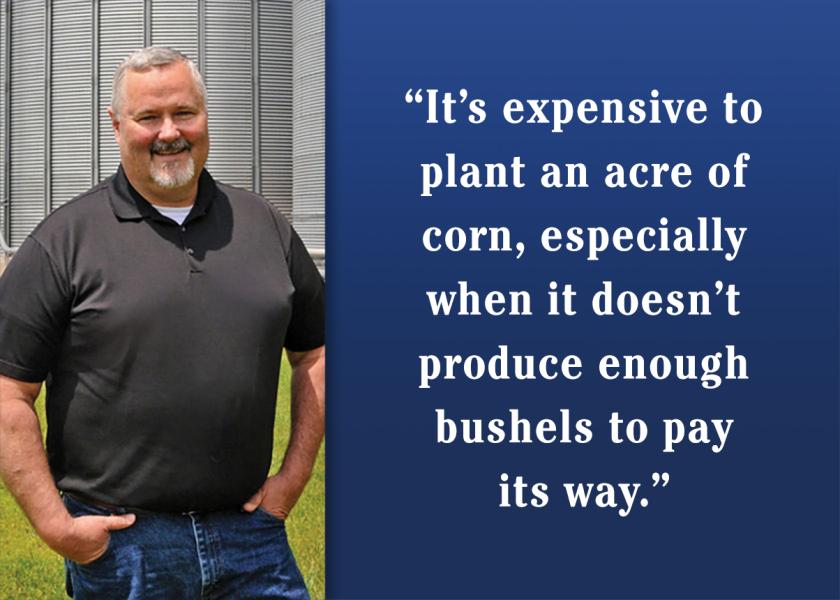There's More Than One Way to Raise Yields

The pursuit of higher yields is always a priority for corn and soybean growers. It’s what you do. From a marketers’ perspective, I get it and will many times offer encouragement to chase every last bushel. After all, you can’t sell a bushel you don’t grow.
However, the past few years of rising production costs are reason to question that tactic. It’s expensive to plant an acre of corn, especially when it doesn’t produce enough bushels to pay its way – and most likely hasn’t paid its way for several years. Some fields have a spot that consistently does not produce, and you probably know the spots on your farm I’m talking about.
Every Acre Matters
It might be only 4 acres in a quarter section – just 2.5% of the 160 acres, but those acres matter. If 156 acres average 200 bu. per acre, but the remaining 4 acres average just 20 bu., the yield on the entire section drops to 195.5 bu. per acre.
Treating those 4 acres the same as all the others means they’re getting a full dose of fertilizer, chemical, seed, fungicide, time and fuel. If it costs $600 dollars to grow an acre of corn that yields 200 bu., that’s pretty good. But if you’re spending that same money on those 4 acres that consistently do not produce just because “it’s easier,” you might as well throw those dollars in a fire.
At $600 per acre on 160 acres, production cost is $96,000 for that field. At $4.50 per bushel at 195.5 average yield, revenue is $140,760. You’ve made $44,760. But at $600 per acre on 156 acres, production cost is now $93,600. And at $4.50 per bushel at 200 bu. per acre, revenue is $140,400. It’s a better year; you’ve made $46,800. Net income is up $2,040 (4.6%) by taking those non-productive acres out of the mix.
How to Fix It
I know, the 4 acres that are not productive can’t, and shouldn’t, be ignored. If they are consistently too wet, look into a wetland restoration project that could help to filter runoff and nitrates from your watershed. There are federal, state and water resource district programs available to make wetlands an affordable, healthy addition to your farm.
If the 4 acres are without excess water, conservation reserve program options are available, as are efforts through organizations like Pheasants Forever. Talk with one of their biologists or with a county conservationist to better understand your options. Some of these programs offer annual lease payments, which means those acres might actually add to the bottom line.
Another benefit is a climbing Actual Production History (APH) average yield for crop insurance on the 156 acres still in production. And eliminating those non-productive acres will most likely mean new whole-field record yields and more net income for years to come.







